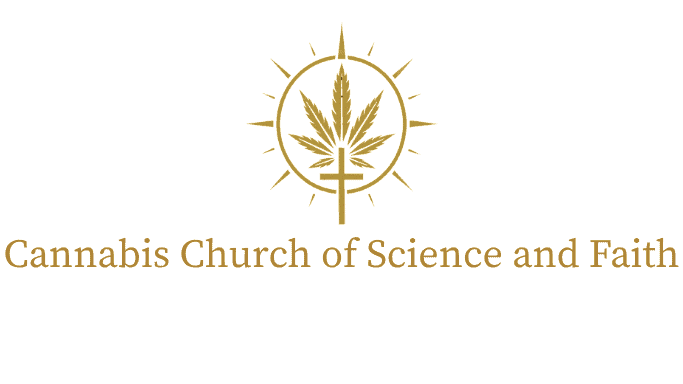June 24, 2025
Cannabis Church of Science and Faith — Learning Series
Opening Reflection:
Before the body, before the brain, before the name—there is breath.
We don’t remember our first breath. But without it, we would remember nothing. It is the silent threshold between existence and nonexistence—the signal that we are here now. Every inhale is a beginning. Every exhale, a surrender. But what is this breath that animates dust into being? Is it mere oxygen—or is it something more?
Before we ask when life begins, perhaps we must ask what life truly is.
Part I — Ancient Symbols, Modern Questions
“And the Lord God formed man of the dust of the ground, and breathed into his nostrils the breath of life; and man became a living soul.”
— Genesis 2:7
This poetic verse is often quoted but rarely understood. The Hebrew word used for breath here is “ruach”—which also means spirit or wind. In Greek, the word becomes “pneuma”—used interchangeably for breath and soul. Across traditions, breath is not just air. It is spirit-in-motion.
Gnostic texts like the Apocryphon of John take this further, suggesting the divine spark—the breath of life—is not granted by a jealous demiurge but from the higher, unknowable Source beyond form. This is not creation for control, but awakening for freedom.
So why is it that in our world, people use the idea of life to control others—especially women?
Part II — Breath and the Body: A Gnostic Understanding
In Gnostic teachings, the body is not evil—but neither is it the source of life. It is a vessel. The breath animates it. But what animates the breath?
Choice. Awareness. Connection. These are signs of gnosis—the inner knowing that we are more than flesh. The Gnostic Jesus taught that the Kingdom is within—not in temples or laws or institutions, but in the breath-fed spirit that knows right from wrong without fear or force.
And yet…
Modern religion often reverses this sacred order. Instead of honoring breath as divine, it canonizes control. It ignores the breathless and glorifies the unborn. It speaks of “life” while legislating cruelty.
But Gnosis whispers a different truth:
What is forced cannot be sacred. What is coerced cannot be holy.
Part III — Science, Spirit, and the Living Spark
Let’s turn to the wisdom of science—not as an enemy of faith, but as a partner in sacred truth.
Biologically, breath is the first sign of independent life. Before this, the fetus exists within the mother—not as a separate soul, but as a part of her being. There is no separate breath. No separate self.
Neurologically, consciousness cannot exist without oxygen. It is the breath that fuels brain activity. The breath brings awareness. And awareness is what allows for gnosis—the capacity to know oneself, to love, to choose.
So what does that tell us?
That breath is not just a beginning. It is a consent.
And consent is sacred.
Part IV — The Sacred Use of Cannabis: Returning to the Breath
Cannabis has long been used in sacred rituals—not to escape reality, but to enter it more deeply.
In our path, cannabis slows the mind enough to notice the breath. It brings awareness to what is often forgotten. It reminds us of the sacred rhythm:
Inhale — Receive.
Exhale — Release.
Inhale — Accept.
Exhale — Let go.
When we use cannabis intentionally, it becomes a key:
Unlocking memory. Unlocking presence. Unlocking the deeper truth that we are not gods, and we are not slaves. We are vessels. Stewards. Carriers of a divine spark—and that spark begins with breath.
Practice for Today:
- Light a candle or sit by a window.
- Inhale deeply and say inwardly: “I receive the breath of life.”
- Exhale slowly and say: “I return to myself.”
- Repeat until you feel centered.
- Ask: What gives my breath meaning?
Part V — Preparing for the Sermon: What Breath Teaches Us About Life
This Sunday’s sermon, The Breath of Life, will ask us to confront how religion has manipulated the idea of life to dominate the body—particularly the bodies of women and the marginalized.
But today, let’s remember this:
The breath is not male or female.
It is not Republican or Democrat.
It is not owned by any church, government, or ideology.
It is divine.
It is yours.
It is sacred because it belongs to you.
Integration and Possibility
If society truly understood the sacredness of breath—not just as biology but as agency—what might change?
- Abortion laws might reflect compassion, not control.
- Healthcare systems might honor dignity, not doctrine.
- Spiritual communities might listen to the breath of the people—not just the voices of their leaders.
- We ourselves might finally reclaim our bodies, our spirits, our divine spark.
This is the future Gnosis leads us toward—not a world of forced holiness, but of freely chosen sacredness.
Closing Blessing
May your breath be your compass, not your cage.
May your choices be rooted in spirit, not shame.
May your body be honored as the sacred vessel it is—
And may the spark within you rise, with every breath you take.
🕊️ “The breath of life is not a command—it is an invitation. To live, to choose, to awaken.”


























